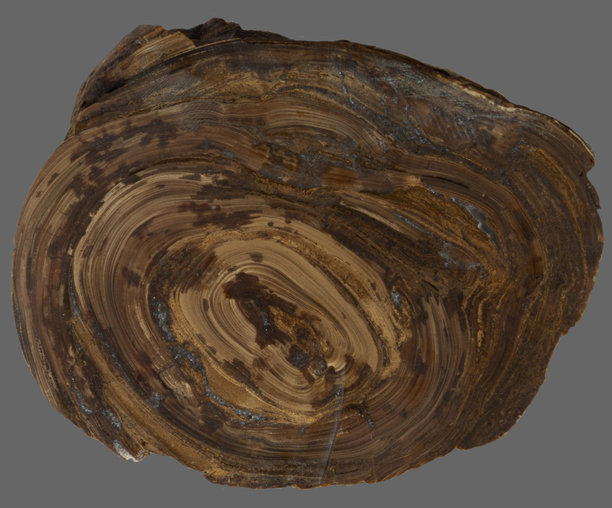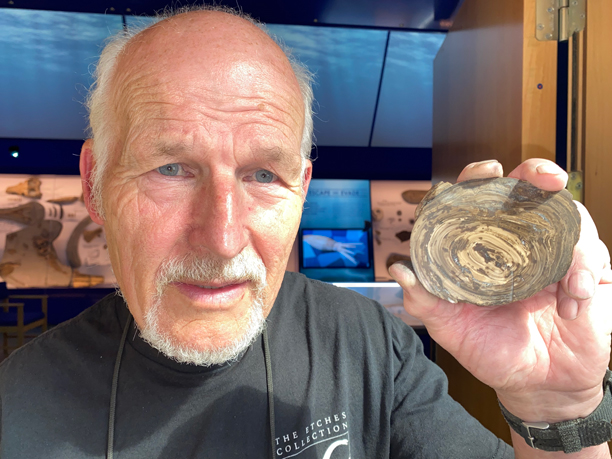The oldest fossil “stomach stone” has been discovered at Kimmeridge Bay, Dorset on the famous “Jurassic Coast”. The baseball-sized fossil was found by the eminent palaeontologist Dr Steve Etches MBE. It is thought to be around 150 million years old. The fossil is at least 59 million years older than the previous oldest known fossilised stomach stone.

The world’s oldest fossil “stomach stone” also known as a calculus. This exceptionally rare fossil was found at Kimmeridge Bay. It is estimated to be approximately 150 million years old (Late Jurassic). Picture credit: Ivan Sansom.
Fossil “Stomach Stone” – A Calculus
Dr Etches sought the opinions of other palaeontologists to see if he could learn more about this mystery object. It was initially dismissed as not being organic in nature. The consensus was that it had formed through geological processes. The stone was passed on to experienced fossil preparator Nigel Larkin who compared it to material in the collections of the Royal College of Surgeons, England, and the University College London (UCL) pathology collections.
It soon became clear the stone was a “calculus”. A “calculus” is a concretion, a collection of minerals that form in the body. These objects are found in many parts of the body, the kidneys, the bladder, the stomach the urinary tract and they have a very specific internal structure.

Dr Steve Etches MBE holding the world’s oldest calculus. One of the UK’s rarest fossils. Found by Steve at Kimmeridge on the Jurassic Coast. Picture credit: The Etches Collection.
An Exceptional Fossil Discovery
Only a handful of calculi have been discovered in the fossil record. It is thought that more exist, but they have not been formally identified.
Nigel Larkin commented:
“I was fascinated by this very curious mystery object and was determined to discover what it was. Unless stomach stones are actually found preserved within a skeleton it is almost impossible to tell what sort of animal it might have formed inside.”
The size of the stomach stone and the location of its discovery (marine deposits) suggests that this object formed inside the body of a large marine reptile. The calculus could have come from a plesiosaur, an ichthyosaur, a pliosaur or perhaps a marine crocodile.
Dr Ivan Sansom, Senior Lecturer in Palaeobiology at the University of Birmingham, carried out microscopic analyses of the stone to determine the exact structure of the specimen and its mineral composition. Based on this analysis Dr Sansom concluded that this stone had formed in the gastro-intestinal tract. It was a fossil “stomach stone”.
The Only Calculus from the UK Fossil Record
The fossil “stomach stone” is estimated to be around 150 million years old (Late Jurassic). This discovery extends the range of known calculi in the fossil record by approximately 59 million years. It is the only fossil of its kind to have been found in the UK. It also confirms their occurrence in marine palaeoenvironments rather than just terrestrial deposits.
Everything Dinosaur acknowledges the assistance of a media release from the University of Reading in the compilation of this article.
The scientific paper: “The fossil record’s oldest known calculus (an enterolith of the gastrointestinal tract), from the Kimmeridge Clay Formation (Upper Jurassic), UK” by Nigel R. Larkin, Thomas Henton, Steve Etches, Adrian J. Wright, Tzu-Yu Chen, Laura L. Driscoll, Richard M. Shelton and Ivan J. Sansom published in the Proceedings of the Geologists’ Association.